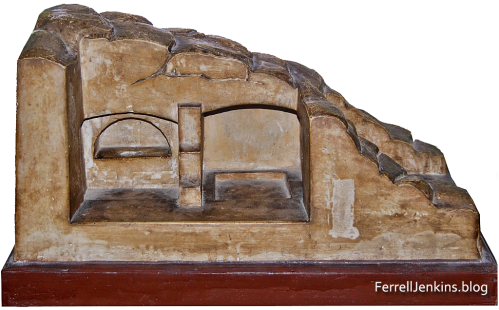Many significant battles have taken place along the Jezreel Valley corridor. See here for more details. One of them was the death of Saul by his own choice in the battle against the Philistines. I have chosen a few phrases about Gilboa used by Zev Vilnay, Israel Guide. Vilnay’s guide was the one to have when I first began touring and I still check it frequently.
“Your glory, O Israel, is slain on your high places! How the mighty have fallen!… “You mountains of Gilboa, let there be no dew or rain upon you, nor fields of offerings! For there the shield of the mighty was defiled, the shield of Saul, not anointed with oil.… “Saul and Jonathan, beloved and lovely! In life and in death they were not divided;…“How the mighty have fallen in the midst of the battle! “Jonathan lies slain on your high places.…“How the mighty have fallen, and the weapons of war perished!” (selections from 2 Samuel 1:19-27 ESV)
So far as I know there is not a way to know the precise spot where Saul and Jonathan died, but this spot which provides a good lookout over the eastern Jezreel Valley is sometimes called Ketif Shaul or the Shoulder of Saul.

Mount Gilboa – Ketif Shaul = shoulder of Saul. Photo by Ferrell Jenkins. For this image I used Landscape Pro filter in Topaz AI.
Click on the photo for a larger image. I am sure there are preachers who could “wax elephant” with the help of this photo. You are welcome to use it.

















You must be logged in to post a comment.